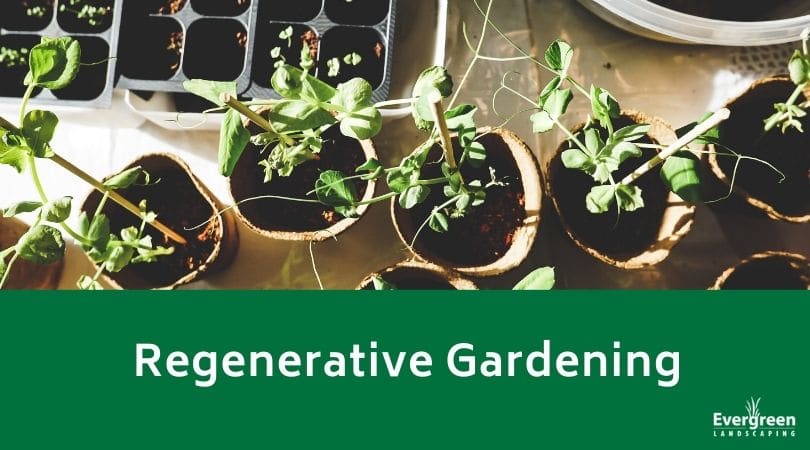Regenerative Gardening

People have grown plants in harmony with their land for centuries. In America, First Nations cultures focused on using farming practices that replenished the land, and this concept is now catching on all over the United States. Regenerative gardening combines sustainable approaches with some of these older methods to create a modern and sustainable gardening technique that is better for the environment.
This gardening method boils down to garden planting and management that keeps waste and emissions in mind. It works to nourish the soil in a natural way instead of creating cycles of depleting it and refilling it with fertilizers. In turn, the soil is healthier because it preserves and nourishes the fungi, invertebrates, and decomposers in the soil. Trying this method allows you to reduce your carbon emissions and save money, and we’re going to give you a few ways to start this garden below.
- Don’t Till the Ground
Digging up your soil can be very labor-intensive. However, it’s also a quick way to break down the soil’s structure and release a host of built-up carbon. You can still prepare the ground in a few ways without tilling up the ground. You can control weed growth by introducing mulch and landscape cloth. Get a broad fork and use it to gently loosen the soil without turning it before you plant anything. To safely get rid of unwanted plants, mow the area. You can also hand pull weeds as they appear to eliminate the use of tilling and chemicals.
- Attract Helpful Wildlife
Many garden plants and crops depend on insects like butterflies and bees for pollination. Incorporating adjacent areas and borders with native grasses and wildflowers gives these insects a habitat, so they’ll stick around your garden. In turn, this can help promote a much healthier ecosystem in and around your garden for your plants to thrive. It can mean fewer pests and better yields too. Additionally, it saves resources and efforts that you would normally spend clearing these areas out.
- Feed the Soil
One of regenerative gardening’s most important tasks is giving back to the soil. You can do this by treating your garden area with a thicker layer of natural compost to give nutrients back to the soil. Compost can also improve the local microorganism communities and reduce erosion by improving the soil’s structure. All you have to do is spread a one to three-inch layer of compost during the spring or fall in your garden area. Legumes can also add nutrients back to the soil by leaving plant matter in your garden to decompose.
- Avoid Harmful Ingredients and Practices
If you have a pest problem, there are a few ways to remedy it without reaching for chemicals. For example, some plants will repel insects to protect your garden, like marigolds and lavender. Using spray variations of their oils or planting them can help deter pests. You can cover the ground with plastic sheets to heat it to kill weed seeds before they sprout instead of using herbicides.
Contact Evergreen Landscaping
Would you like more tips or information about regenerative gardening? If so, contact our helpful staff at Evergreen Landscaping. We’re ready to help in any way we can.
